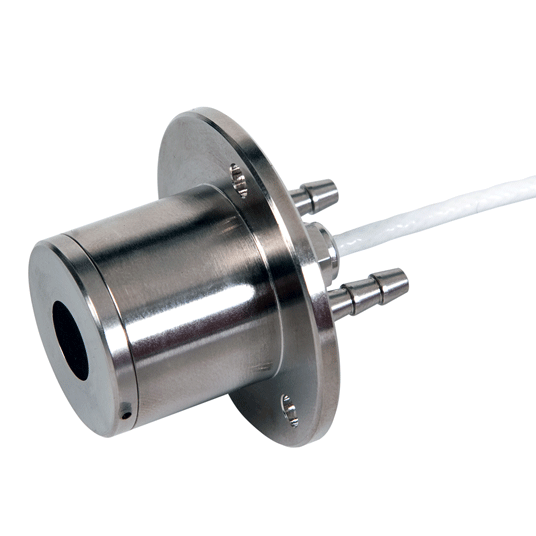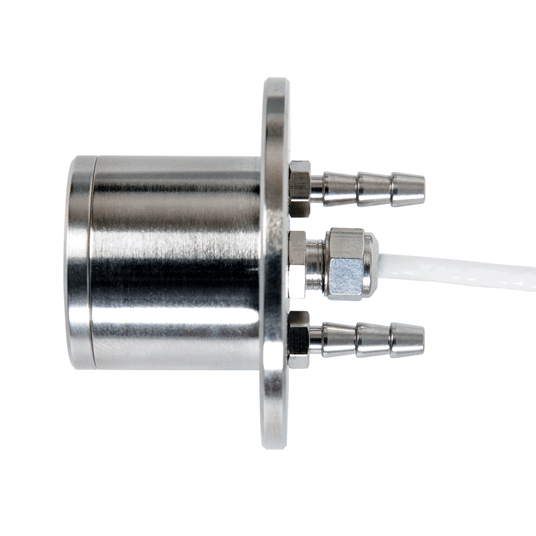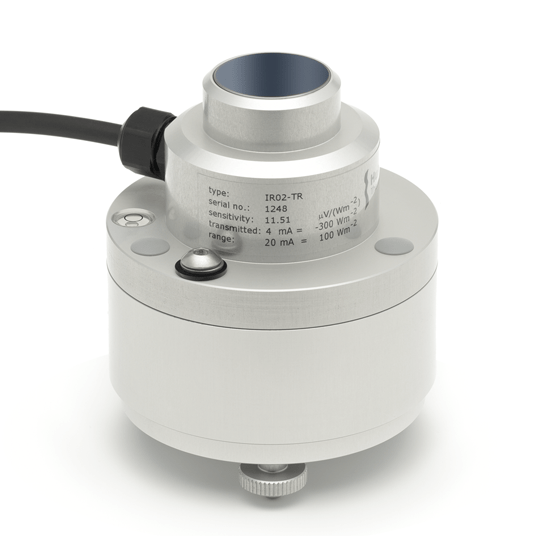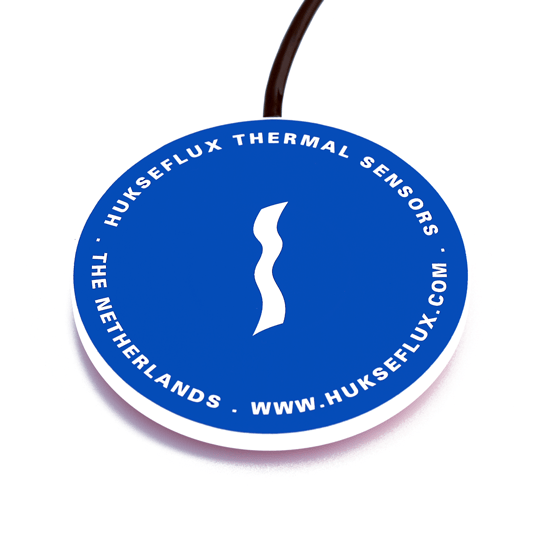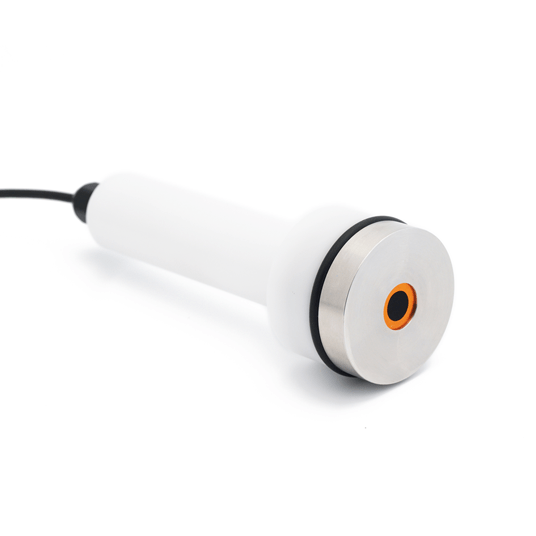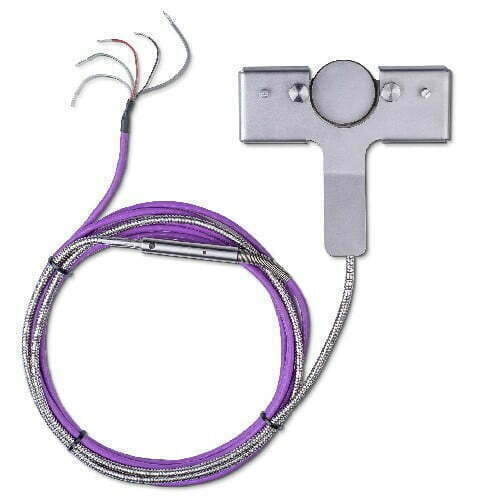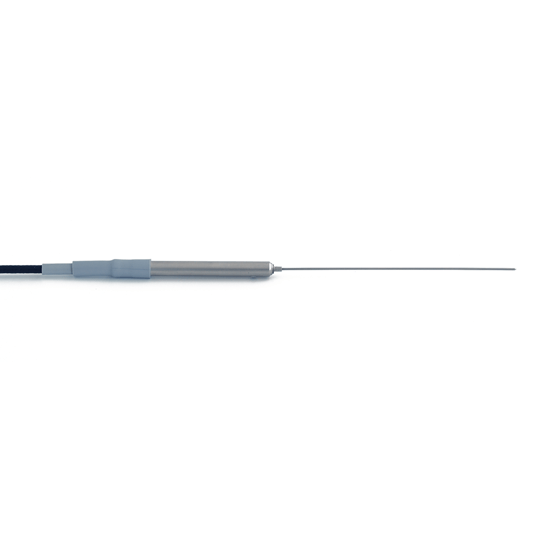Description

There are 6 models of SBG01
SBG01 measures heat flux in the range of (5 to 200) x 10³ W/m². Equipped with a black absorber, heat flux sensors of this type are designed for measurement in an environment in which heat flux is dominated by radiation. Using an open detector, SBG01 is also sensitive to convective heat flux. This contribution is usually ignored. Application in environments with lower than 50 x 10³ W/m² irradiance levels or environments with significant heat transport by convection is possible but requires a careful evaluation of the measurement uncertainty. SBG01’s thermopile sensor generates an output voltage proportional to the incoming irradiance. The sensor is water-cooled. There are 6 models of SBG01; each with a different rated measurement range, calibration reference irradiance level, sensitivity and response time. Water cooling is usually supplied by tap water. There are several optional body designs. The standard body is equipped with a flange. Common options are a smooth cylinder body without a flange (model -C) and threaded body (model –T). Also a thermocouple (type T or K) can be fitted upon request.
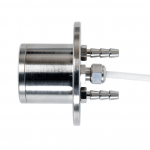 Advantages
Advantages
SBG01 has a novel sensor design, which combines the benefits of foil technology of the traditional Gardon gauges with those of the thermopile technology of the traditional Schmidt-Boelter gauges. SBG01 has several advantages:
- Robust and serviceable water tubes
- Scratch resistant absorber coating (slightly lowered surface)
- Safe storage with a practical protection cap
Suggested Use
- SBG01 has rapidly become the sensor of choice for fire testing. SBG01 is mainly used to test reaction to fire and fire resistance. It is also used as a calibration reference standard for test equipment for example in flammability and smoke chamber tests
Areas of Application
- Industrial monitoring and control / heat flux and heat transfer measurement
- Scientific research / heat and heat transfer measurement
Specifications
| Measurand | heat flux |
|---|---|
| Measurement range | (5, 10, 20, 50, 100, 200) x 10³ W/m² |
| Measurand in SI units | irradiance in W/m2 |
| Sensor technology | both Gardon and Schmidt-Boelter |
| Rated cooling water temperature range | 10 to +30 °C |
| Rated cooling water flow | > 10 l/h (0.003 l/s) preferably 30 l/h (0.01 l/s) |
| Rated measurement ranges | (5, 10, 20, 50, 100, 200) x 103 W/m2 |
| 5, 10 x 10³ W/m² | < 450 x 10⁻³ s |
| 20, 50 x 10³ W/m² | < 250 x 10⁻³ s |
| 100, 200 x 10³ W/m² | < 200 x 10⁻³ s |
| Limiting measurement range | 150 % of rated measurement range |
| Output signal | DC voltage |
| Output signal range | > 5 x 10⁻³ V at rated measurement range |
| Spectral range | 0 to 50 x 10⁻⁶ m |
| Full field of view angle | 180 ° |
| Black coating emissivity | > 0.95 |
| Calibration traceability | to ITS-90 |
| – management system certification | ISO 9001 |
| – accreditation | not accredited |
| Calibration method | SBGC secondary calibration method according to ISO 14934-3 |
| Standard cable length | 2 m (see options) |
| Order code standard version | SBG01/rated measurement range/cable length |
| Options | • Rated measurement range (5, 10, 20, 50, 100, 200) x 10³ W/m² • Longer cable (specify total cable length in m) • High temperature cable rated temperature range to 400 °C (specify length in m) • Type T or type K thermocouple connected to instrument body (specify –TCT or – TCK), wire exiting next to signal cable. Wire diameter 0.5 x 10⁻³ m • Smooth cylindrical body without flange (specify – C) • Threaded cylindrical body without flange (specify – T), thread 1-12 UNF |
Frequently asked questions
How to measure heat flux?
Heat flux sensors measure energy flux onto or through a surface in [W/m²].
The source of the heat flux may be:
- conduction
- radiation
- convection
Convective and conductive heat transfer are associated with a temperature difference. Heat always flows from a source to a sink, from a hot to a cold environment. Convective and conductive heat flux is measured by letting this heat flow through the sensor. Radiative flux is measured using heat flux sensors with black absorbers. The absorbers converts radiative to conductive energy. Hukseflux started in 1993 with sensors for measurement of heat flux in soils and on walls. In the course of the years, we have added specialised sensors and systems for many other applications.
Heat flux sensors manufactured by Hukseflux are optimised for the demands of different applications:
- rated temperature range
- rated heat flux range
- sensitivity
- response time
- chemical resistance, safety requirements
- size, shape and spectral properties
Hukseflux is the world market leader in heat flux measurement. We have prepared a white paper briefly explaining the fundamentals of measuring with heat flux sensors. It also offers general directions what to watch out for and some, perhaps surprising, applications of heat flux sensors. Take a look at our white papers.
What matters most when measuring with a heat flux sensor?
There are quite a few general considerations when starting a heat flux measurement.
- Representativeness in time and space; average!
A heat flux sensor measures at a certain location. Is this location representative of what you need to measure? If possible, use a relatively large sensor, rather than a small one, and consider use of multiple sensors. Thermal processes often have large time constants; instantaneous measurements may be misleading. Average to get the full picture. - Optical properties
When heat flux sensors also measure radiation, pay attention to the surface color. If needed paint the sensor surface. Please mind that shiny metallic surfaces reflect both infra-red and visible radiation. Paints may have different colors in the visible range, but are usually “black” absorbers in the far-infra-red. - Sensor thermal resistance
A heat flux sensor distorts the local heat flux. In order to minimize this effect, use the sensor with the lowest possible thermal resistance. - Edge effects
A heat flux sensor locally distorts the heat flow pattern, in particular around the edges of the sensor. A passive guard, i.e. a non-sensitive part around the sensor is essential to avoid errors due to edge effects.
There are more characteristics that matter. Please find them in our white paper on heat flux fundamentals and applications.
Which sensor(s) to use for surface energy flux measurement?
Hukseflux manufactures a range of sensors for surface energy flux measurements. All have proven reliability.
These state-of-the-art sensors are made for the global fluxnet community:
- NR01 is a market leading 4-component net radiometer.
- HFP01 and HFP01SC measure soil heat flux.
- STP01 offers an accurate temperature profile measurement.
- TP01 is the leading sensor for soil thermal conductivity.
Sensors made by Hukseflux are designed for compatibility with most common datalogger models. For many models we have example programs and wiring diagrams available.
How to measure R-value and U-value of buildings?
On-site measurements of thermal resistance, R, are often applied in studies of buildings. Alternatives are to measure its inverse value, the thermal conductance which is called the Λ-value, or the thermal transmittance which includes ambient air boundary layer thermal resistance, the U-value. The measurements of R are based on simultaneous time averaged measurement of heat flux Φ and differential temperature, ΔT, (using two temperature sensors on each on a different side of the wall).
R = ΔT / Φ
Hukseflux provides a range of sensors and measuring systems for use in measurement of the energy budget of buildings and characterization of construction materials.
HFP01 heat flux sensor and TRSYS01 measuring system are widely used for on-site measurements on walls, windows and other construction elements in building physics.
- HFP01 can be used for in-situ measurement of building envelope thermal resistance (R-value) and thermal transmittance (H-value) according to ISO 9869, ASTM C1046 and ASTM 1155 standards. HFP01 is the world’s most popular sensor for heat flux measurement in the soil as well as through walls and building envelopes. HFP01 measures heat flux through the object in which it is incorporated or on which it is mounted, in W/m². More information? Visit the HFP01 product page.
- TRSYS01 is a high-accuracy system for on-site measurement of thermal resistance, R, thermal conductance, the Λ-value, and thermal transmittance, the U-value, of building envelopes. TRSYS01 is mostly used for measurements according to standard practices of ISO 9869 and ASTM C1155 / C1046. The system is equipped with high-accuracy electronics, two heat flux sensors of model HFP01 as well as two pairs of matched thermocouples. The two measurement locations provide redundancy, leading to a high level of confidence in the measurement result. The high accuracy of the heat flux sensors and temperature difference measurements ensures that TRSYS01 continues measuring when other systems no longer perform; in particular at very low temperature differences across the wall.
Where can I find complete heat flux measuring systems?
Hukseflux, market leader in heat flux measurement, offers both sensors and systems.
These measuring systems typically include a Measurement and Control Unit and one or more sensors for measuring heat flux as well as other measurands, such as temperature and humidity. Examples are the TCOMSYS01 Hot Cube thermal comfort measuring system, including a TCOM01 sensor, and the TRSYS01 measuring system, incorporating two HFP01 heat flux sensors and two pairs of matched thermocouples.
Cannot find what you are looking for? Please contact us.

